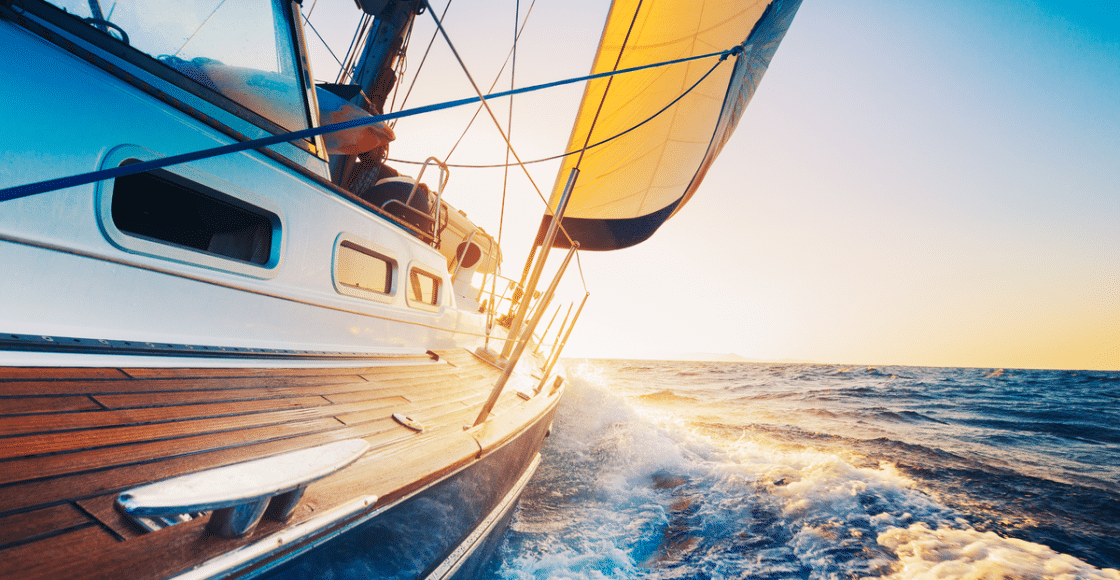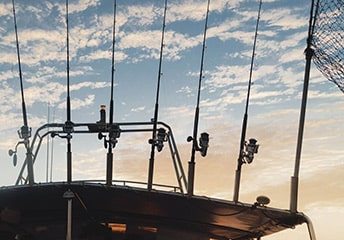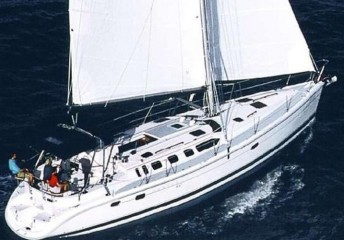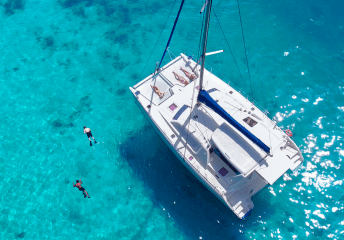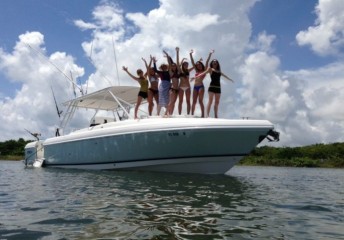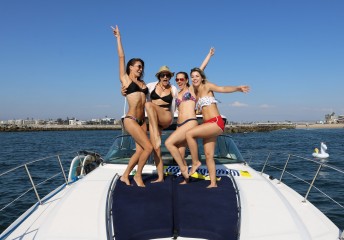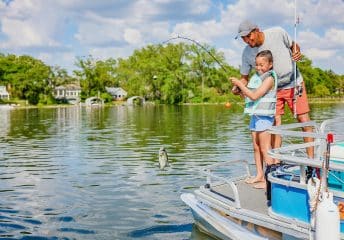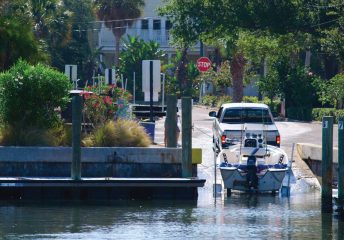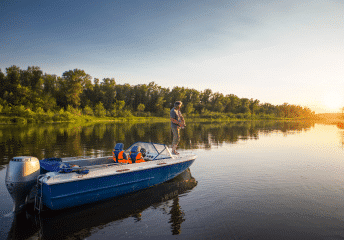Do Sailboats Have Motors?
Most sailboats over the length of 16 feet have some form of auxiliary power. That may be an electric motor or gas-powered outboard. But the larger a sailboat, the more need there is for an engine.
The purpose of a motor on most sailboats is for maneuvering when in the harbor or marina. Sailors also use a motor when loading their sailboat onto their trailers. Of course, all of the above can be done without a motor, but it takes a lot of skill. However, a powered boat sure is nice to have when you’re making a run for safe harbor or when the wind stalls.
What is a sailboat with a motor called?
Most modern sailboats have motors. The type of motor depends on the age of the boat, the size of the vessel, and its purpose. However, there is a class sailboat called a motorsailer. It has an engine that can move it along at speed without the sails, or only the sails can propel it.
Many older motorsailer designs don’t do very well at either task. Newer designs, however, range from a mere 26 feet to 100 feet or more, and sail and motor equally well, due to modern boat designs and engineering techniques.
Sailors tend to be purists, and although motors are necessary for safety, they want them to be as unobtrusive as possible. Even today’s motorsailers are on board with this philosophy. As we age, hanging over the rail retrieving a loose sail gets less and less exciting, and the appeal of a motor sailor becomes greater.
Do all sailboats have a motor?
No, because many real small sailboats don’t need one, and a paddle will suffice as auxiliary power. Prams, dinghies, small sailboats, and beach cats don’t generally need a motor. This is because they are primarily sailed from the beach. However, small sailboats can benefit from the use of today’s modern electric motors.
Unlike older electric boat motors that require a heavy battery for power, modern electric outboard motors have self-contained batteries. This fact makes using them a breeze. The problem with them is the battery doesn’t have enough juice to last more than a few hours.
That is okay if you are in a dinghy, but in a larger sailboat that may go out past the horizon, you want a motor that will get you back home.
What types of motors do sailboats have?
There are four distinct types of marine engines and thrusters, too.
1. Gas outboard engines
As already mentioned, gas outboards are used primarily for boats less than 30 feet in length. They are convenient because they cause no motor odor in the cabin, and you can replace them quickly if they fail. These motors range from three horsepower up to over 50 horsepower for some sailboats. Gas outboards have been used on sailboats for over 50 years, and they will continue to be used for years to come.
2. Diesel engines for sailboats
Diesel engines are the power of choice for sailboats. They are reliable, efficient, and relatively quiet. Diesel sailboat motors range from a tiny nine-horsepower unit, for smaller boats, up to about 125 horsepower, which is enough power for all but larger motorsailers and sailboats.
Until the 1970s, the most common inboard diesel for sailboats was Universal’s Atomic 4. However, since they closed their doors, several companies have worked to fill the marine engine niche. These companies include John Deer, Kubota, Yanmar, and Westerbeke, who still makes parts for the Atomic 4. All of them make marine diesel engines for small and large sailboats.
3. Electric motors for sailboats
Electric outboard motors have been mentioned for use on prams, dinghies, and other small craft. However, due to trial and error, electric motors have been designed to power sailboats larger than dinghies and trailer sailors. Like diesel motors, electric motors are placed in the lower section of the boat and connected to a shaft and propeller. Connected to a large bank of batteries that can be recharged with solar panels, a wind generator, or a hydro generator, an electric motor is used for maneuverability around the harbor and marina.
Using a purely electric motor for a sailboat has limitations due to the inability to store or generate enough power to motor for hours at a time. Due to this small storage capacity, they can only be used for a short time before they need to be recharged.
4. Hybrid electric power for sailboats
Combining the attributes of diesel power with the clean energy of electricity, hybrid-electric power plants, aka diesel-electric power, is the best of both worlds. With this type of power in your sailboat, power is almost free and endless. Note I said, virtually, because the diesel tank does need to be filled occasionally.
Hybrid electric power uses an electric motor to power your boat and a small diesel engine to charge the bank of batteries. When combined with solar panels and other methods of battery recharging, hybrid-electric power is becoming standard on new production sailboats and as conversions on older sailboats.
5. About those thrusters
The motor no one sees, bow thrusters are a great aid when docking or putting your boat on a trailer. Once only seen on sailboats over 50 feet in length, bow thrusters are a significant aid when docking and maneuvering around other craft in the harbor. They are now available for boats as small as 25 feet in length.
Types of sailboats
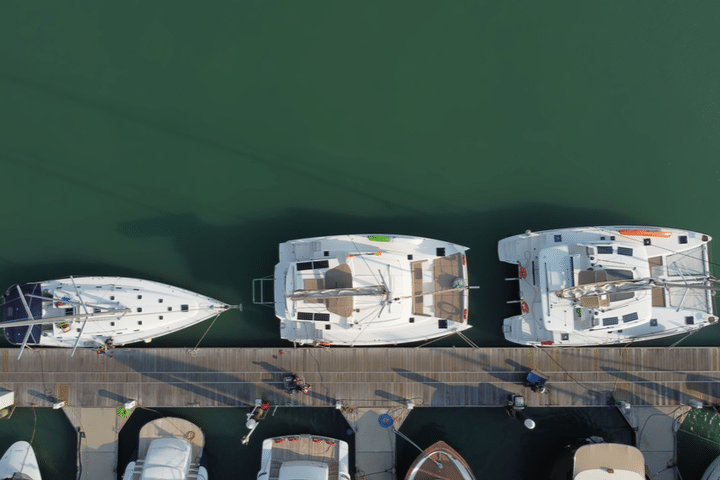
Motorsailers were mentioned above, but hull types have not been, and there are three main types of hulls for sailboats. They are the monohull, which means just what it says; the boat has one hull and usually just one motor. However, some large motorsailers often sport two engines.
Catamaran sailboats have two hulls, and many of those over 30 feet in length has two engines. Two engines are great for the redundancy of systems. Still, it is an added expense because it costs more to maintain two motors than one.
The next type of sailing vessel you will see in small and extremely large versions is the trimaran, which has three hulls. However, three hulls do not equate to three engines, and they generally have only one inboard motor for boats over 30 feet. Smaller trimarans use outboard motors for power or no power at all.
The cost of owning a sailboat
Small sailboats that can fit on a trailer and get hauled to the water have a low cost to own. In addition, general maintenance is not very expensive. Any care that you need to do is usually within the scope of sailboat owners with moderate skills with tools.
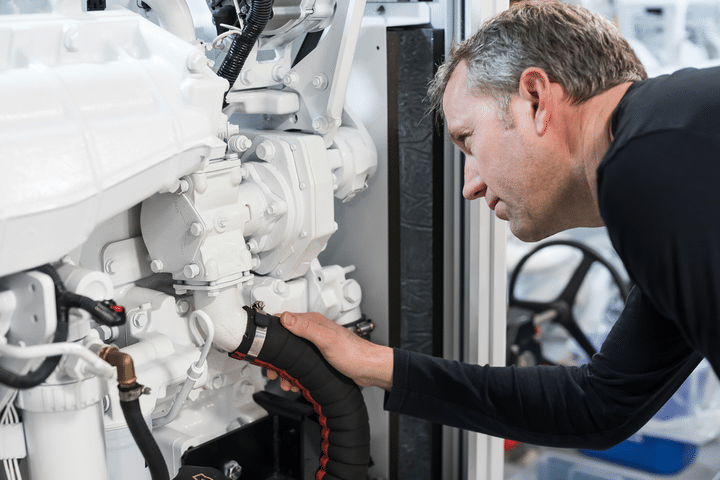
However, when you get into the realm of diesel engines, hybrid power systems, and bow thrusters, maintenance takes on a new dimension. Most boat owners can do the maintenance necessary to keep their engines running, such as oil changes, checking fluids, and filtering fuel.
However, when the time for servicing comes, a mechanic will be necessary. They run a minimum of $100 an hour unless you are lucky enough that you can call a friend.
Maintaining a sailboat is expensive – we can help
At Boatsetter, we work with sailors who rent their sailboats to people around the world. Our boat rental community allows you to rent only your boat, or you can join the party as captain of your ship as you impart your sailing knowledge to your paying guests. Renting your sailboat is one way to offset some of your annual costs with the added benefit of getting paid to be captain for the day.

Boatsetter empowers people to explore with confidence by showing them a world of possibility on the water. Rent a boat, list your boat, or become a Boatsetter captain today.
